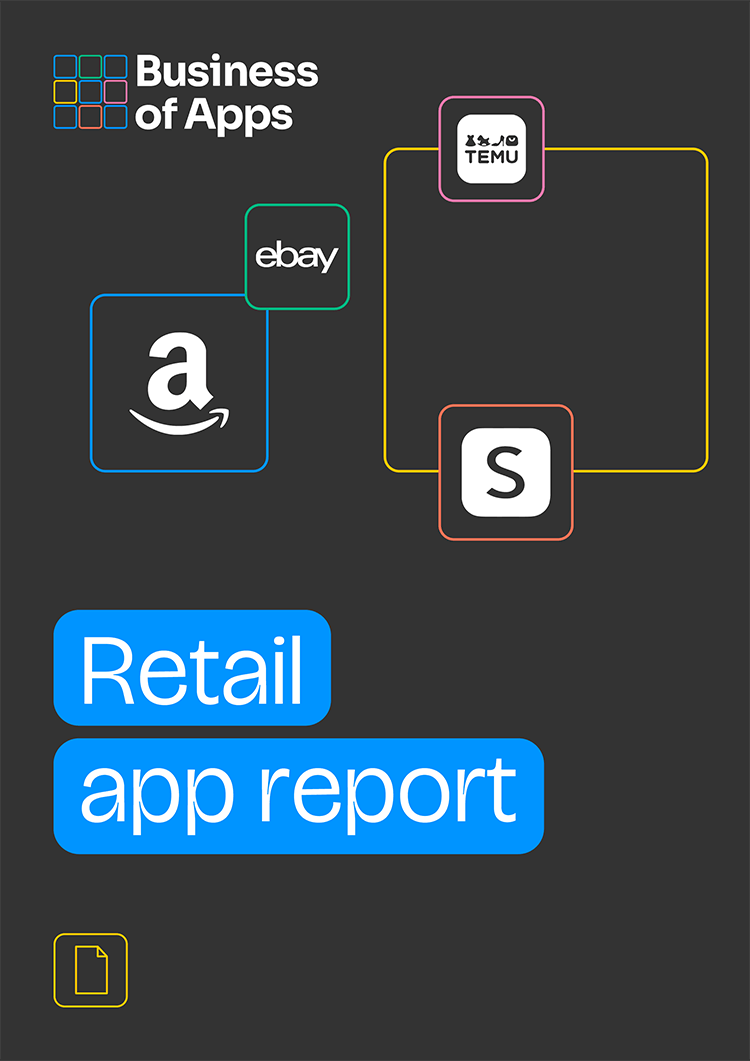Mobile ecommerce is a huge and growing industry, responsible for over $3 trillion in global revenue. The apps that underpin this industry are used by billions of people, and lots of careful consideration is put into every design and function choice.
Ecommerce apps need to be sticky and a lot of their value derives from the items available. Marketplaces, such as Amazon, eBay or Shein, have succeeded through scale, offering far more items than the competition without caring too much about quality or value.
Scale is not the only factor however, as many luxury brands offer a very limited selection of items on their apps. At this end of ecommerce, a lot more thought is put into the presentation of each item, rather than simply offering as much as possible.
Understanding where an ecommerce app falls in that scale, from marketplace to luxury, is key to that consumer feedback loop required to keep users returning.
There are many KPIs to track with an ecommerce app, including cart abandonment and add-to-cart rate. High add-to-cart rate can indicate a good selection of items and easy route to basket, while high cart abandonment may indicate issues with the payment flow and other distractions. Other metrics, such as retention and conversion, remain important as they are across all app sectors.
We have collected data and statistics on ecommerce app benchmarks. Read on below to find out more. Need more insights? Check out our retail app report.
Key Ecommerce App Benchmarks
- The retention rate for ecommerce apps was 4.2% in 2023, which has been on a steady decline over the past three years
- Ecommerce apps have highest conversion rates during the winter holiday season, and customers in the Americas convert at a higher rate
- Over three-quarters of carts in ecommerce apps are abandoned, with the highest rates on luxury and jewelry vendors
- Less than 8% of users add an item to a cart. In the summer, this rate drops to 6%
- Mobile is the prefered way to access ecommerce apps, with over 70% of users opting for mobile
Retail App Report 2024
Want to learn more about the retail app industry? In our Retail App report, we cover financials, market share, usage, downloads and demographics, with regional and country level breakdowns.
Ecommerce App Retention Rate
Like almost all app sectors, ecommerce apps have seen retention rate declines over the past three years, dropping to 4.2% in 2023.
Ecommerce app retention rate 2020 to 2023 (%)
Ecommerce App Conversion Rate
Conversion rate is the percentage of visitors that complete purchases. For ecommerce apps, the best time for conversion in the winter holidays.
Ecommerce app conversion rate (%)
Ecommerce App Conversion Rate by Category
Food & beverage has the highest conversion rate across all categories listed in Dynamic Field by Mastercard’s ecommerce KPI benchmarks.
Ecommerce app conversion rate by category (%)
Ecommerce App Conversion Rate by Region
Americas typically has a higher conversion rate than other regions, although it has a very steep fall off following the Christmas holidays.
Ecommerce app conversion rate by region (%)
Ecommerce App Conversion Rate by Device
PC users have a higher conversion rate than those on mobile. Tablet users are somewhere in-between, which makes sense given the three form factors.
Ecommerce app conversion rate by device (%)
Ecommerce App Cart Abandonment Rate
Three quarters of virtual carts are abandoned regardless of the time of year. Summer does have slightly higher abandonment rates. Expensive purchases, such as luxury & jewelry and home & furniture, see the highest abandonment rates, while pets & vets have the lowest.
Ecommerce app cart abandonment rate (%)
Ecommerce app cart abandonment rate by category (%)
Ecommerce App Add-to-Cart Rate
Similar to conversion, the percentage of total users that add an item to the cart increases in November, before falling in the spring and further in the summer.
Ecommerce app add-to-cart rate (%)
Ecommerce App Average Order Value
Conversely, while the conversion and add-to-cart rate goes up, the average value of each purchase decreases.
Ecommerce app average order value ($)
Ecommerce App Usage by Device
Mobile dominates usage, accounting for around three-quarters of all usage in 2024.
Ecommerce usage by device type (%)
Ecommerce App Total Hours Spent
Total hours spent on ecommerce apps has almost doubled in the past half decade, with a large increase during the coronavirus pandemic.
Total hours spent on ecommerce apps 2019 to 2023 (bn)
More Shopping App Data
- Meesho Revenue and Usage Statistics (2025)
- Ecommerce App Revenue and Usage Statistics (2025)
- ASOS Revenue and Usage Statistics (2025)
- Wayfair Revenue and Usage Statistics (2025)
- Wish Revenue and Usage Statistics (2025)
- Etsy Revenue and Usage Statistics (2025)
- Shein Revenue and Usage Statistics (2025)
- China Ecommerce App Revenue and Usage Statistics (2025)
- eBay Revenue and Usage Statistics (2025)
- Pinterest Revenue and Usage Statistics (2025)



